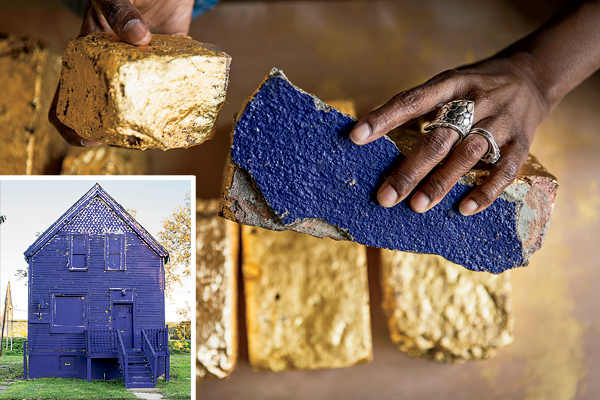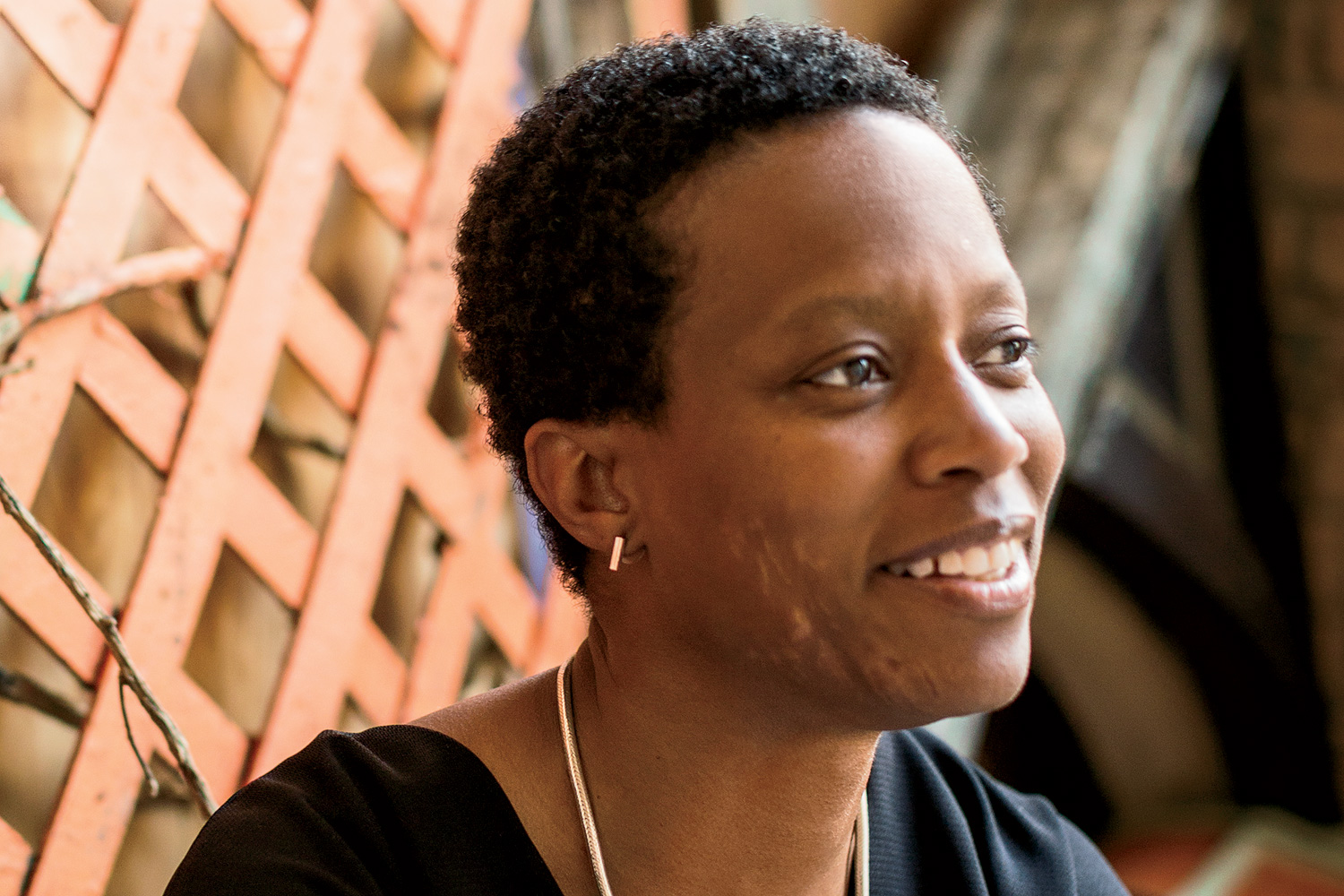In Amanda Williams’s Bridgeport studio, things that seem unremarkable are anything but. In one corner of the cluttered space, a brick—its purple paint peeling at the corners—sits beside the item that inspired its vivid color: a Crown Royal whiskey bag. In another, an orange trellis stands next to its inspiration: a Flamin’ Hot Cheetos bag. The objects aren’t leftover scraps, but rather central pieces in her first solo exhibition, Chicago Works: Amanda Williams, at the Museum of Contemporary Art Chicago. “It’s about what it means to make something special,” says Williams, “and bring value to it.”
Both pieces are recycled from houses that Williams painted in 2014 for Color(ed) Theory. In that much-talked-about project, she found eight abandoned Englewood properties slated for demolition and had tagger friends help her paint them in one of eight colors she developed, each tied to the South Side black experience: Ultrasheen blue, Pink Oil Moisturizer, Harold’s Chicken Shack red, Currency Exchange yellow, Safe Passage yellow, Newport teal, Crown Royal purple, and Flamin’ Hot orange. The irony of bringing pieces of those structures (several of them now destroyed) into a tony art institution is not lost on Williams: “These houses that were invisible—why do they become special all of a sudden when I paint them and then they’re demolished? Why did you not care when it was just boarded up?”
That line of questioning permeates all of Williams’s work. In A Way, Away (Listen While I Say), a project that began this spring at the Pulitzer Arts Foundation in St. Louis, Williams and fellow Chicago artist Andres L. Hernandez slathered gold paint on a condemned industrial building. For Amanda Williams: Uppity Negress, at the Arts Club of Chicago through September 23, Williams installed a fence that juts out from the permanent one around the club’s garden, literally getting out of line, or “uppity.”
And now Williams turns to the notion of value by coating a stack of Chicago bricks in goldleaf and covering a gallery space scaled to the size of a Chicago lot with the same material. “We’re sitting on this gold mine of land on the South Side,” Williams explains, “but invisible forces don’t allow people to own the land and then improve upon it.”

The 42-year-old South Side native has always straddled two worlds. She grew up in Auburn Gresham, which was solidly working-class then, and her white-collar parents drove her and her brother across town to Hyde Park every day to attend the prestigious Lab Schools. “That gave me a sense of curiosity but also cognitive dissonance,” she says.
As a kid, Williams says, she constantly made art—paintbrushes and pencils “were always there, like water.” She got a bachelor’s in architecture from Cornell University—her mother told her “artists who make money are called architects”—and then worked as an architect in the Bay Area in the 1990s during the dot-com boom. At night, she painted. As her wealthy peers in tech bought up her abstract oil works, Williams transitioned to art full-time in 2004. Eventually, she “hit a wall” with painting: “I couldn’t understand what it was all about aside from churning these things out to be able to churn more of these things out.”
So Williams, who moved back to Chicago in 2009 to be closer to family, decided to explore how she could bring together her interests in design and the dynamics of race: “I wanted to do something that made sense of color in these two ways,” she says. “I’m in these two lanes at the same time all the time.”
After she created the eight hues that would form Color(ed) Theory, a question still remained: What to do with them? A 2013 conversation with curator and friend Tricia Van Eck helped her hone her vision. Williams recalls Van Eck saying: “So you want to paint at the scale of architecture? And you want color to have both formal and racial implications? Well, why are we sitting here?” The following year, Williams started painting the houses—without any official authorization. Says Van Eck: “Amanda raises questions about color on an abstract level but also about how color is played out on a tangible level in the city.”
Go:Chicago Works: Amanda Williams runs July 18 to December 31 at the Museum of Contemporary Art Chicago, 220 E. Chicago Ave. $7 to $12. mcachicago.org



